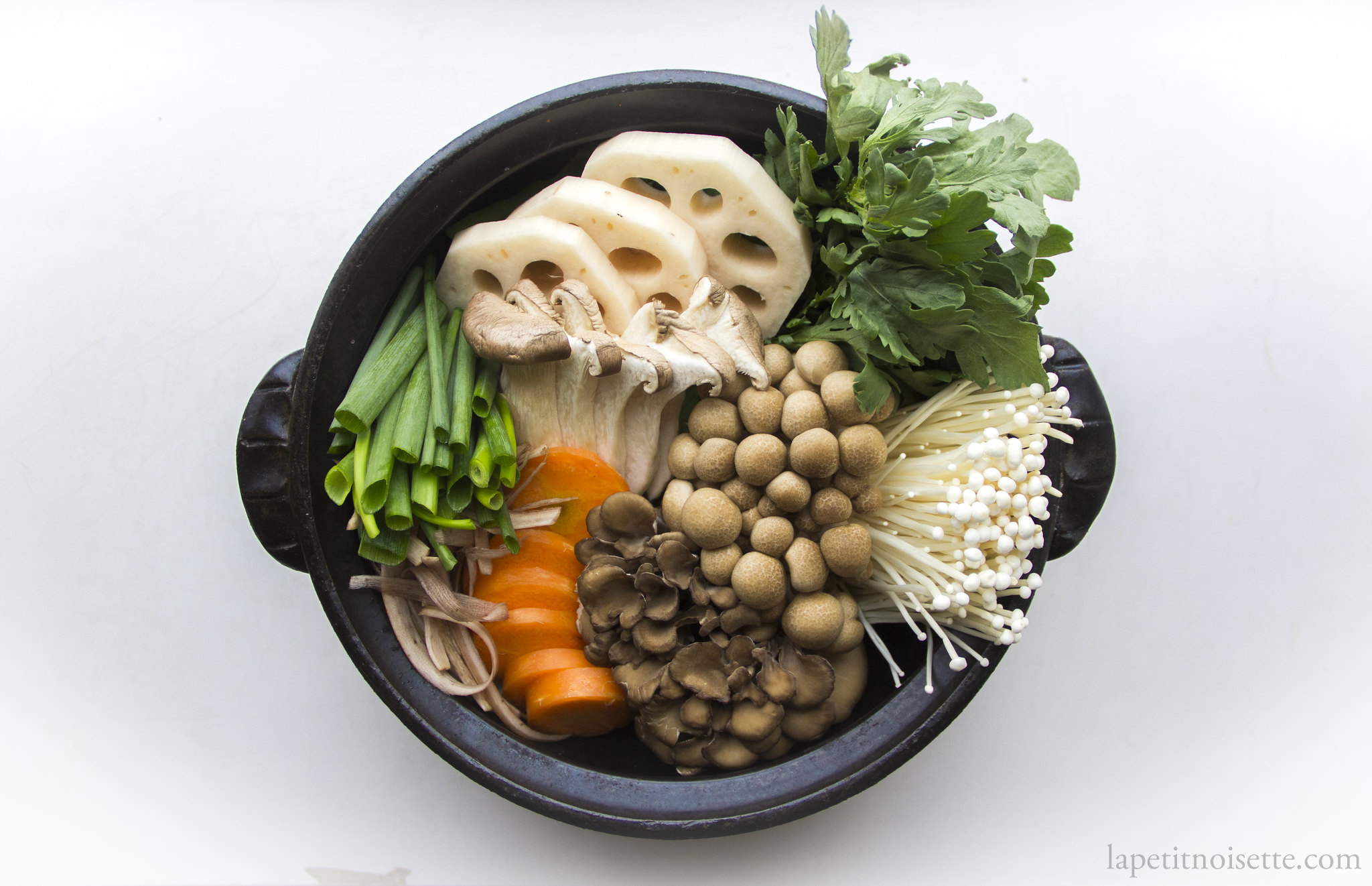
While formally looked down as a dish for people living in rural areas, wild boar hotpot soon spread around the Japan as an autumn/winter dish. This dish can now also be commonly found in the region around Mount Amagi (天城山) of Shizuoka prefecture (静岡県), and the city of Gujo (郡上市) of Gifu prefecture (岐阜県), with some restaurants serving as a seasonal specialty. Wild boar meat of course, can be found all over the world ,and any mountainous area in Japan (which is basically the entire of Japan). This recipe uses wild boar from Fukuoka (福岡県). Wild meat in general in Japanese is called Gibier (ジビエ), which is actually the word for game meat in french. The term Gibier encompasses the main game meats in Japan- Mallard (Kamoniku/鴨肉), Boar (Inoshishiniku/猪肉), Deer (shikaniku/鹿肉) and Bear (higumaniku/羆肉).
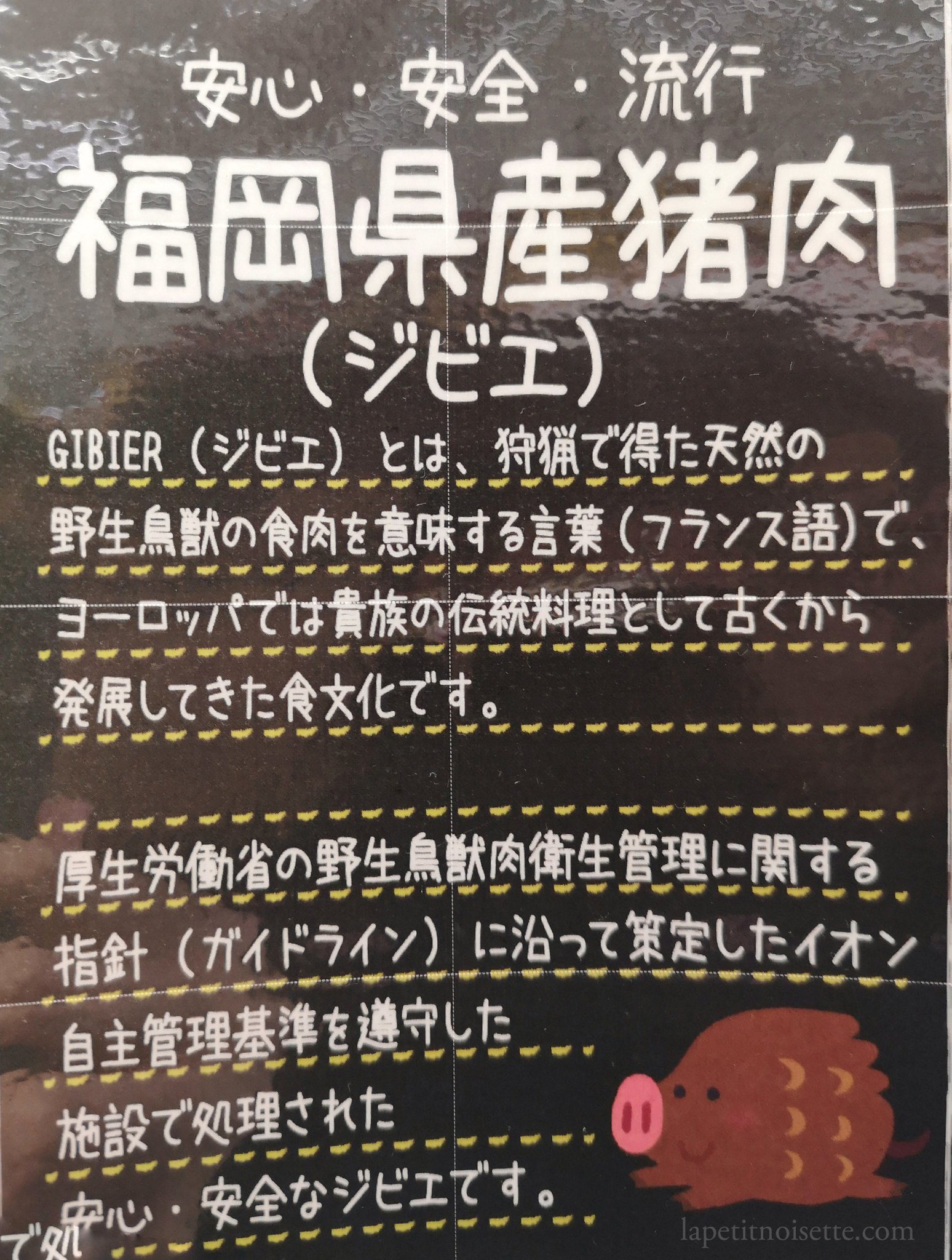
In restaurants, the meat of the wild boar is arranged in the shape of a peony flower (Botan/ 牡丹 in Japanese), which has then lead to the current name of the hotpot- Botan Nabe. The actual word for wild boar in Japanese is Inoshishi (猪).
As wild boars are basically feral pigs, the taste of pork and boar is extremely similar. In the same way that grass-fed beef is more flavourful compared to grain-fed beef, the main taste of boar compared to pork is that of the environment if grows in. For example, wild boars roam free on the mountains foraging for food whilst avoiding predation and thus obtain much more exercise compared to that of domesticated pigs. This means that their muscles are much leaner and richer in blood vessels, whilst also having less fat. As with pigs, wild boars are not picky eaters at all and have an extremely varied diet in Japan that ranges from berries and chestnuts all the way to mushrooms. Some people even claim that wild boars in Sasayama are able to find and consume the highly prized Matsutake mushrooms. In the same way Spain’s famous Iberico pork‘s fat obtains their taste from the acorns they consume in the famous Dehesa landscapes, the taste of this varied diet is then transferred to the little fat that these Japanese wild boars have.
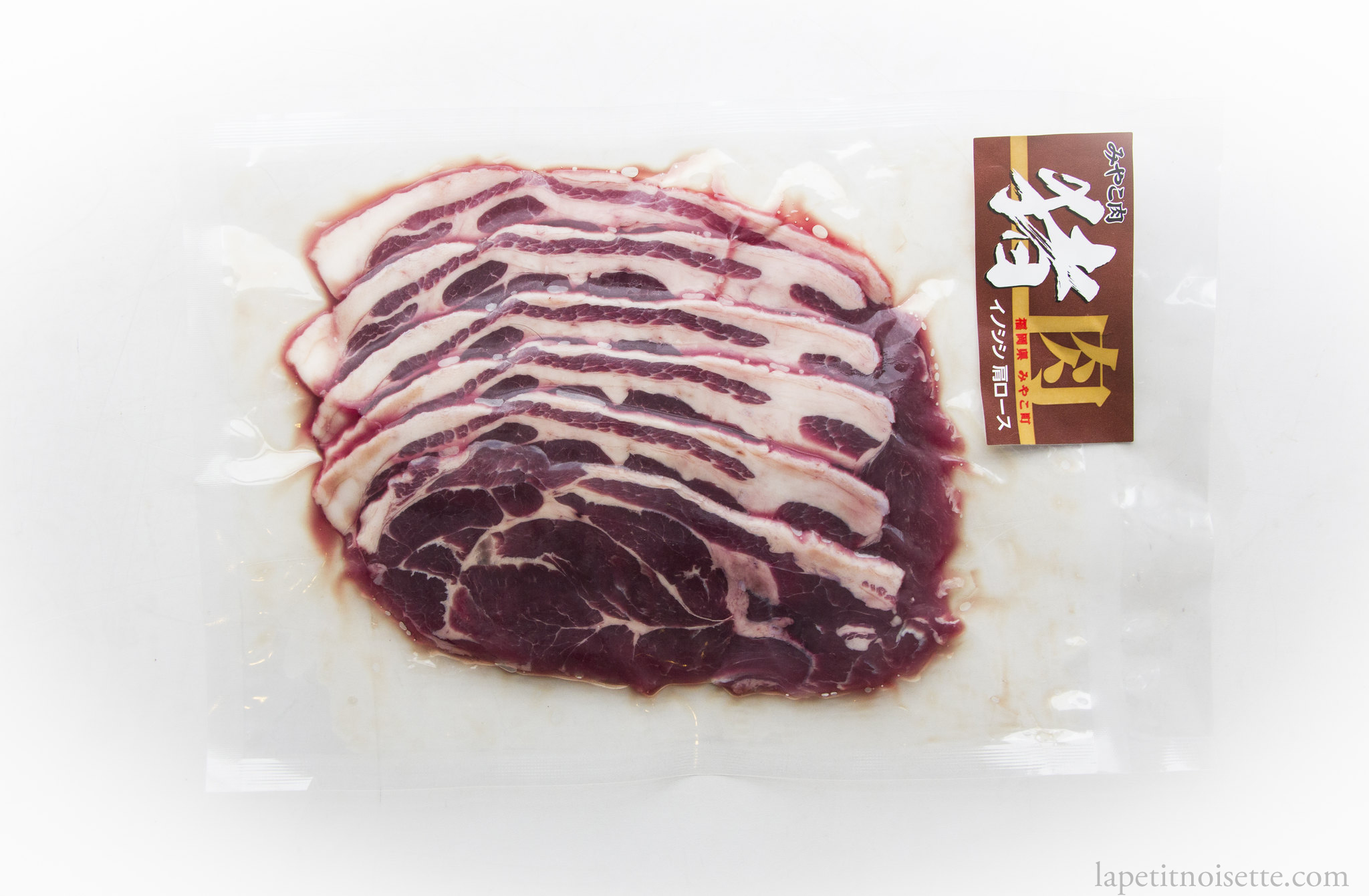
As winter approaches, the boars start to accumulate fat stores to survive the barren winters. It is at this point that they begin to be hunted as the additional fat increases the flavour of the dish (around November to March). Certain people in Japan say that they prefer to eat boar sole from female pigs with the logic that it tastes better. The argument that follows this is that female pigs eat more during winter compared to male boars and thus have a higher fat content. I personally don’t know whether this is true or not, the taste difference in male and female pigs/boars can actually be attributed to boar taint. Boar taint is the urine and faecal odour and flavour that you get in male pigs and boars that female pigs don’t have. This is said to be due to their pheromone make up that they use to attract female pigs. Boar taint is actually a huge problem in the pork industry all over the world. In most southeast-asian country, this problem is counteracted by castrating the male pigs at a very young age, a practice that is prohibited in many western countries due to ethical reasons. When it comes to boars however, you will never be able to find a castrated wild male boar which means that they will always have boar taint. Of course this probably contributes to the sought after gamey taste of a boar to a certain extent. In any case, wild boar and pork are never labeled as female or male when you buy it anyway (unless you’re a restaurant buying it from a supplier/hunter).
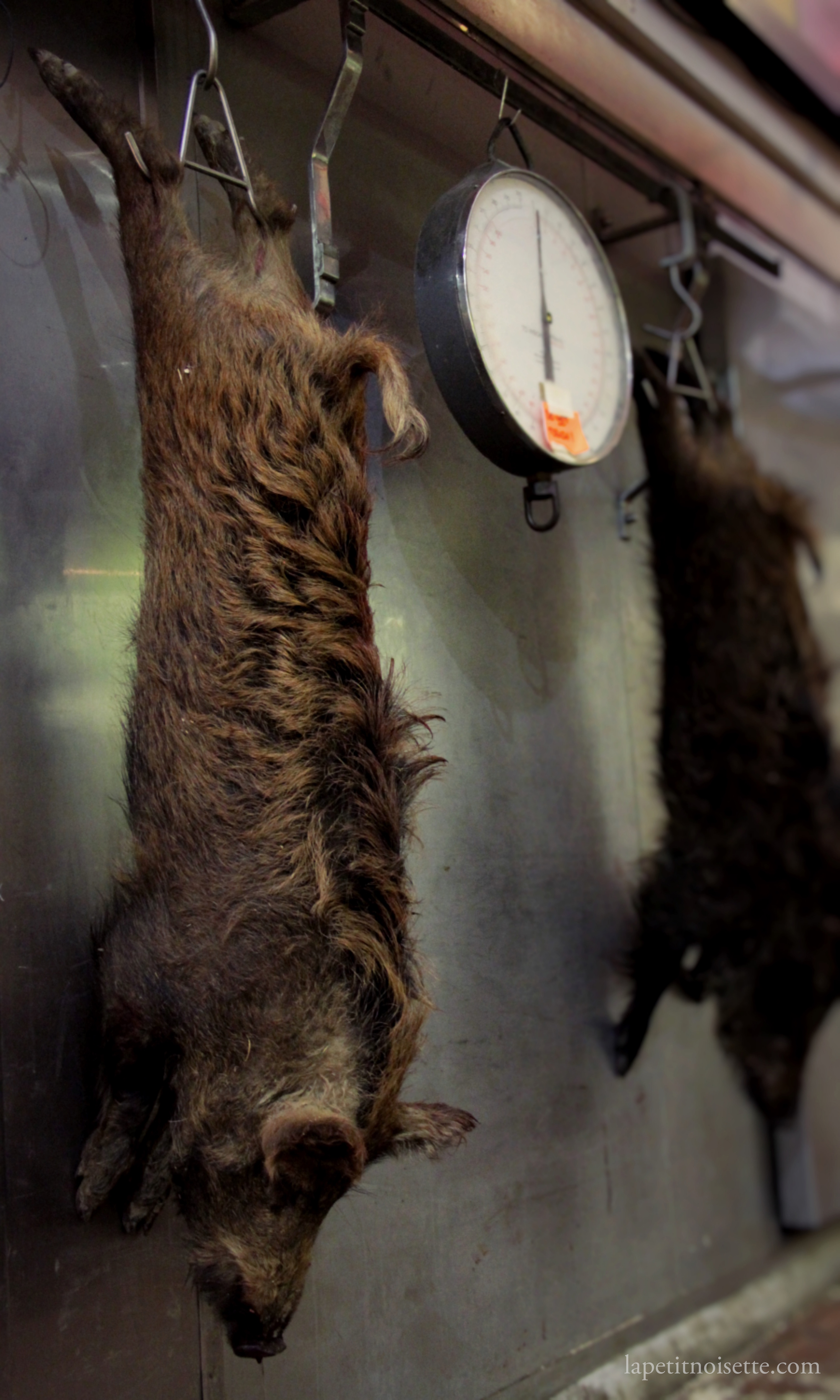
The dish is typically served with a variety of vegetables and mushrooms, most notably burdock root (Gobo/牛蒡, ごぼう). After peeling, some people soak the burdock root in water but this is actually optional. Soaking it in water just reduces the taste of the root which may be too strong for some people. Like carrots, you can also scrub them clean and not peel them. The addition of burdock root to Botan Nabe is also sometimes debated over. This is because unlike beef or pork which can easily be over cooked in a stew and become quite tough, wild boar meat becomes softer and softer as it is cooked for longer periods of time, which may cause the burdock root to go mushy. We are not talking about the 3 hour western stews of course, but the thin cut quick cook meat you get in japan that is cooked for mere seconds to minutes. Here, the fact that wild boar meat is sometimes cooked for 10 to 15 minutes is extremely long.
The base of the soup for this hotpot can be either soy sauce or miso based, but is usually red miso based, as a soy sauce or white miso based soup would not stand up to the strong taste of the boar. (There does exist a restaurant in Kyoto that specialises in serving this dish with white miso) In my recipe, I also add in chestnuts, which are not a traditional ingredient but in my opinion suits the dish very well.
As with most Japanese hotpots, the soup base and ingredients are typically prepared in the kitchen beforehand, before being beautifully arranged into a cooking vessel, either a cast iron or clay pot. The cooking vessel is then placed over a fire in front of the guest where the last stages of cooking occur and the meat in added. When eaten, the boar meat is simmered in the broth before being fished out and dipped in a mixture of ponzu or optionally sansho pepper (山椒). When the majority of ingredients have been eaten and the broth has had time to absorb the taste of the various ingredients and reduced down, noodles or rice can be added to the pot to soak up the wonderful broth.
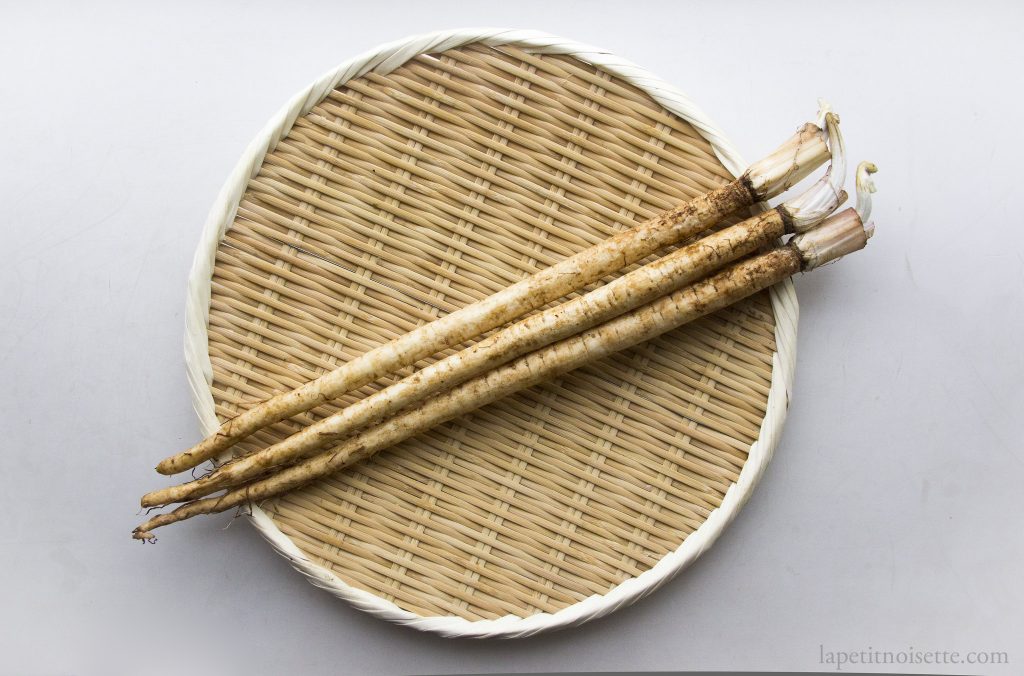
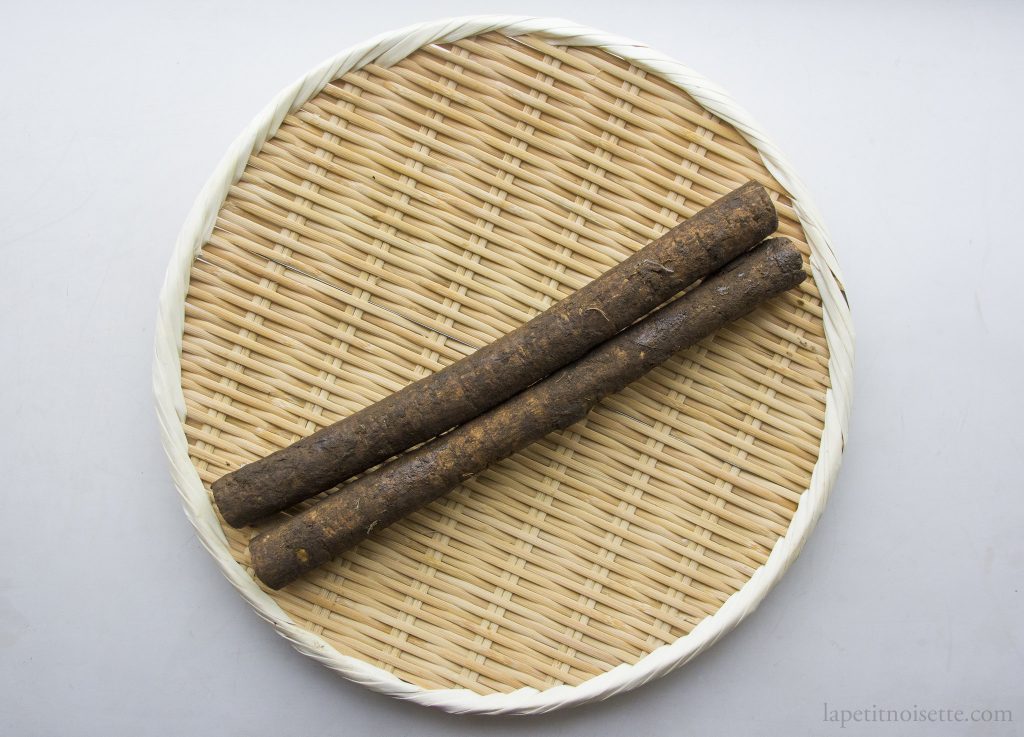
Botan Nabe/ ぼたん鍋 Recipe:
Soup base:
- 1000ml of Dashi Stock
- 45-60g of Red Miso ((赤味噌)
- 15ml of Mirin
- 10g of brown sugar
Toppings (you can change this up to suit what you like):
- 200-400g of Wild Boar meat
- Roasted Chestnuts
- Burdock Root
- Firm Tofu
- Carrots
- Shirataki Noodles
- Shiitake/Maitake/Shimeji Mushrooms
- Chrysanthemum Leaves (Shungiku/春菊)
- Japanese mustard greens (Mizuna/ミズナ/水菜)
- Green Onions
- Lotus Root
To Serve
- Sansho Pepper
- Ponzu sauce
- Udon Noodles
- Rice
Equipment recommended
- Cast iron pot/donabe
- Portable stove
- Soup strainer

To prepare the ingredients, wash the outside of the burdock root and soak in water for 30 minutes. Chop up the Chinese cabbage into strips and cut of the roots off all the mushrooms. Cut the carrots into slices and chop up the green onions to your preferred size. Wash and peel the lotus root before slicing thinly. Wash and cut up the Chrysanthemum leaves and Japanese mustard greens. Drain the firm tofu of its water and cut up. Once soaked, drain and peel the burdock root and cut into fine matchsticks. (see the notes section for this recipe for more information).
To prepare the soup base, in a large pot or claypot, bring the dashi stock up to a boil and add in the mirin. At this point a little brown sugar can be added to your taste. Switch off the heat and add the miso to a fine mesh strainer and dip the strainer into the stock to dissolve the miso. Discard any bits that do not pass through the strainer.
To serve, arrange all your ingredients nicely in your pot. At the table, finish the cooking by bringing the pot to a simmer over a portable stove or fire. When the vegetables and meat are cooked, the ingredients can then be fished out of the broth and eaten with your choice of dipping sauce.
At the end, add in noodles or rice to soak up the remaining broth.
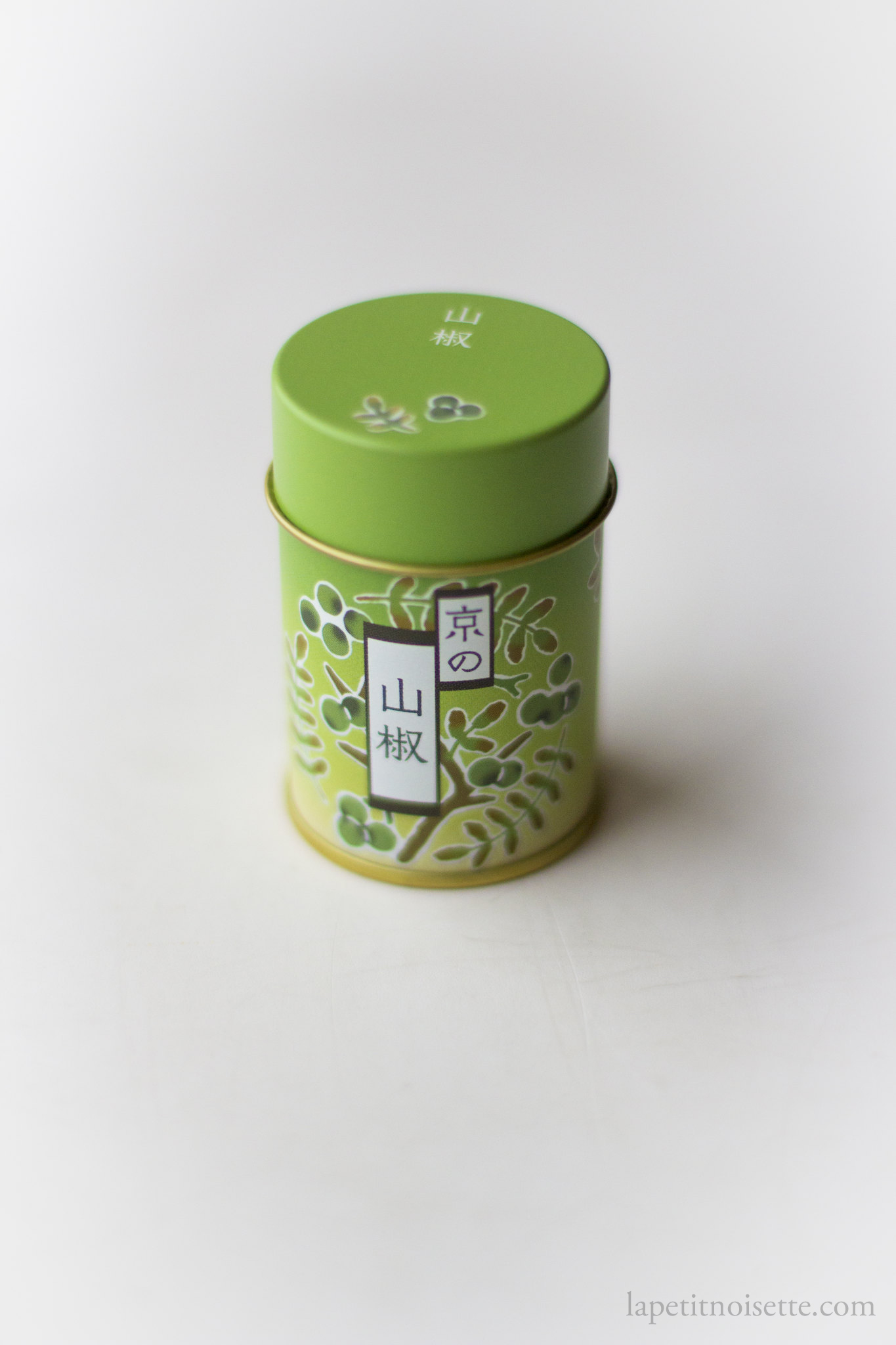
Notes:
- The key point to focus on for the success of this dish is to pay attention to the various cooking times of different ingredients. As it is desirable for all the ingredients to finish cooking at the same time, the different ingredients need to be prepared based on their required cooking times. For example, vegetables that require a long time to cook such as carrots, daikon or turnips should either be cut thinly or parboiled, whilst different mushrooms might not need to be cut as thinly.
- It is not necessary to soak the burdock root before cooking unless you want to lessen the intensity of the taste.
- If you want to add chestnuts, prepare them using the instructions on our recipe for chestnut rice.
On Miso and Meat Cuts
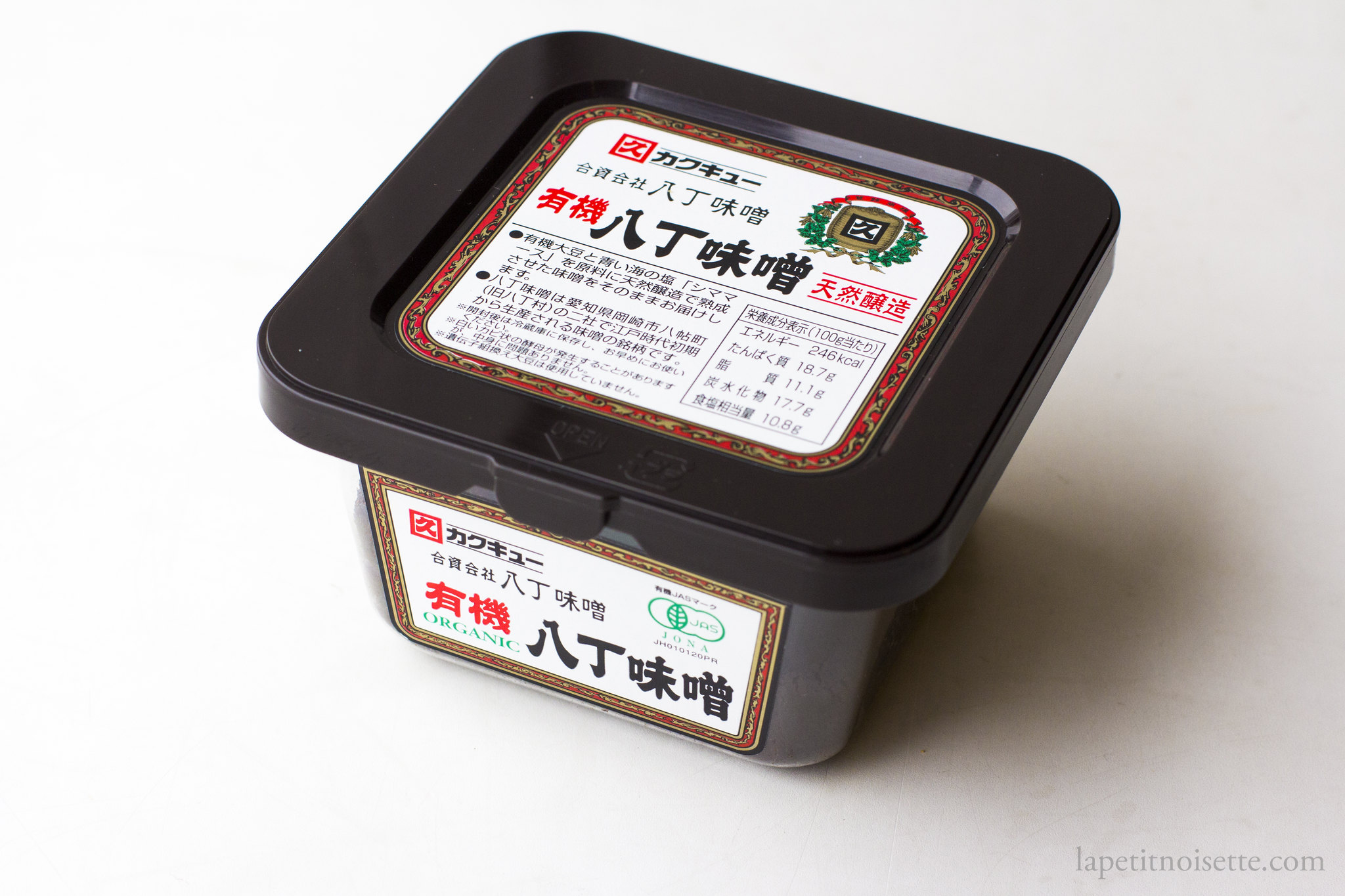
The typical kinds of miso you can find outside of Japan are white miso (Shiromiso/白味噌) and red miso (Akamiso/赤味噌). In order to stand up to the strong taste of wild boar, the use of red miso is more suitable as it has a less delicate taste. When making this dish, I actually used a kind of miso called Hatcho miso (八丁味噌), which is a kind of soybean miso (Mamemiso/豆味噌) that is steamed instead of boiled before being allowed to ferment for over 2 years while being weighed down by river stones. Because of this long fermentation time, it has very very strong umami notes with no sweetness and only bitterness. Whilst quite suitable for boar meat, in our opinion, it is a non-typical substitution.
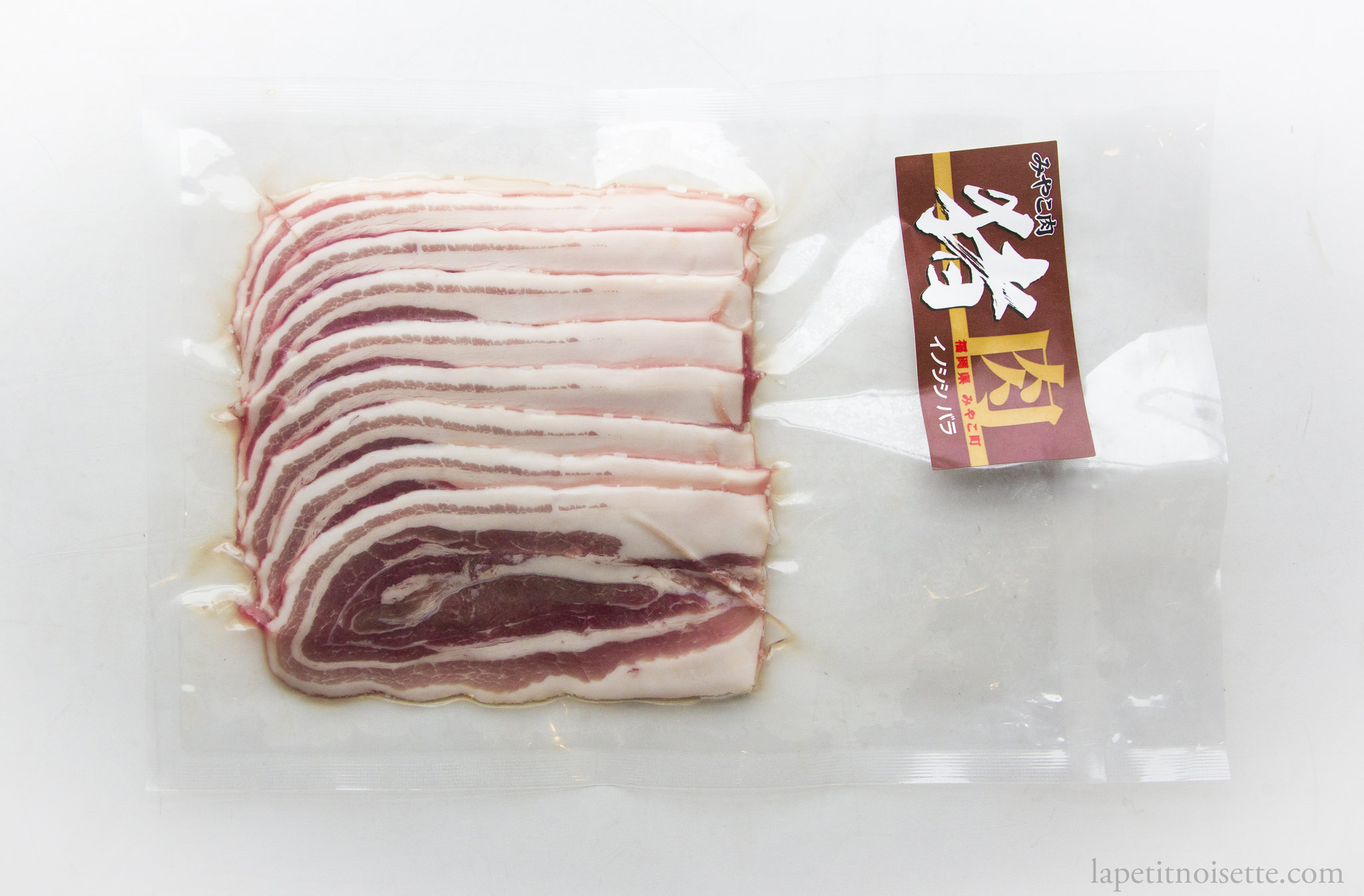
The two cuts of meats which I added into this stew were the shoulder loin or (Katarosu/ 肩ロース) and the meat surrounding the ribs of the boar (Para/バラ肉). The shoulder loin had relatively little fat and therefore required a longer period of time to cook. This cut of meat had a much stronger taste and flavour compared to the rib meat, which had significantly more fat but a less intense flavour.